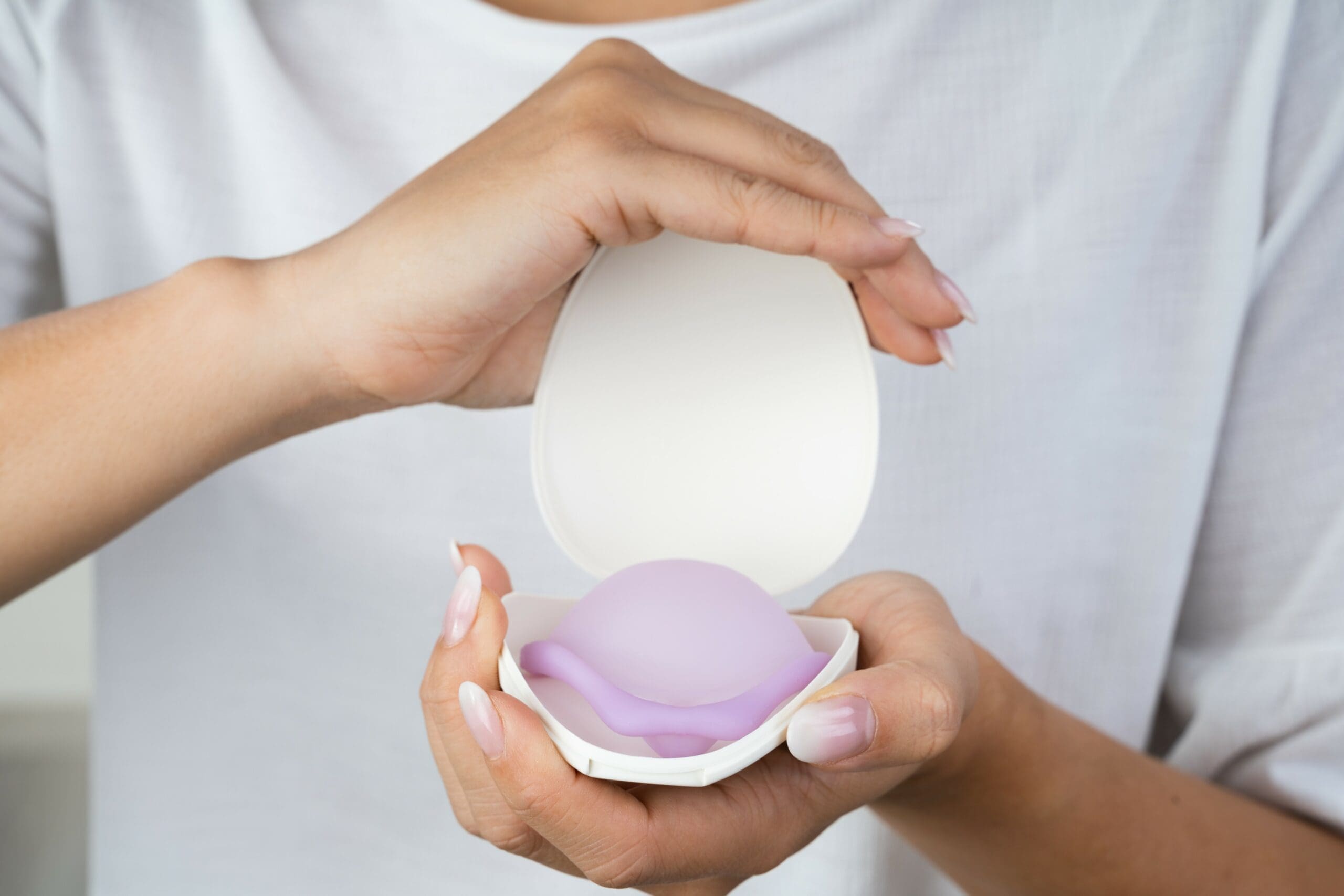A diaphragm – a soft circular silicone rubber dome that a woman inserts high into her vagina – is a barrier method of contraception. Diaphragms work by covering the opening to the uterus (the cervix) and stopping sperm from entering. This prevents sperm from being able to reach and fertilise an egg (ovum).
In Australia, the one-size diaphragm (brand name Caya) is available. Unlike other diaphragms, this diaphragm doesn’t need to be fitted – the single size fits most women due to its special shape.
A contraceptive gel (or diaphragm gel) that contains lactic acid (such as Caya gel) should be used with the one-size diaphragm to improve the reliability of this type of contraception. The gel helps by forming an additional barrier in front of the cervix and making the vaginal fluid more acidic, which reduces sperm mobility. It is not a spermicidal gel.
How effective are diaphragms at preventing pregnancy?
The one-size diaphragm is about 82-86 per cent effective at preventing pregnancies. That means that the failure rate is about 14-18 per cent. The good news is that the failure rate tends to decrease with experience and frequent use.
Failures can happen if you:
- don’t use the diaphragm every time you have sex;
- don’t insert the diaphragm properly using appropriate contraceptive gel (such as Caya gel); or
- don’t leave the diaphragm in place for long enough (at least 6 hours after having sex).
Where to get a diaphragm
In Australia, you can buy one-size diaphragms and contraceptive gel from Family Planning Clinics, some pharmacies and online.
Women who have been previously fitted with a diaphragm may be able to purchase different types of diaphragms from overseas.
Does my diaphragm need to be fitted?
Even though the one-size diaphragm doesn’t need to be fitted, it’s best to see your doctor or go to a family planning clinic before using it. A doctor or nurse will show you how to insert it correctly and how to remove it.
Diaphragms should not be used during the first 6 weeks after childbirth. Ask your doctor at your first check-up after having a baby whether a diaphragm may be a suitable contraceptive for you.
Also, bear in mind that the one-size diaphragm is not suitable for all women – your doctor will be able to work out if it’s not a good fit for you.
How to use a diaphragm
You can put your diaphragm in place up to 2 hours before having sex.
Before inserting the diaphragm, wash your hands and apply about a teaspoon of contraceptive gel to the upper surface of the diaphragm. Carefully follow the instructions on how to insert your diaphragm – when it is inserted properly and in the right place you shouldn’t be able to feel it inside you.
Caya one-size diaphragms should not be used with lubricant gel that contains silicone (dimethicone).
Petroleum jelly (Vaseline), baby oil, bath oil or other oil-based products may also damage some diaphragms.
It is recommended that spermicides be used with some types of diaphragms. However, spermicides are currently not available in Australia.
When to remove a diaphragm
A diaphragm should be left in place for at least 6 hours after sex. If you want to have sex again within the 6 hours, you should first re-apply the contraceptive gel (without removing the diaphragm). Don’t remove the diaphragm until 6 hours have passed since the last time you had sex.
Diaphragms should not be left in for longer than 24 hours.
Caring for your diaphragm
When you remove your diaphragm, it should be washed with mild, unperfumed soap and water. Avoid using disinfectants, detergents, powders or perfumed soaps because they may weaken or damage your diaphragm.
Leave your diaphragm to air dry before packing it away. Store your diaphragm in a place where you can easily find it each time — a cool place is best. Check each time you clean it for holes or thinning in the silicone. If your diaphragm is damaged, you will need a new diaphragm.
If properly cared for, your diaphragm should last for up to 2 years.
Side effects associated with diaphragms
There is a small risk of toxic shock syndrome with the use of diaphragms. For this reason it’s important that they are not left in place for more than 24 hours.
In some women,using a diaphragm can irritate the bladder, causing cystitis (inflammation of the bladder).
Advantages of using a diaphragm
Some of the advantages of using a diaphragm for contraception include the following.
- You don’t need a prescription.
- They can be used by women who are not able to use hormonal methods of contraception.
- They can be used while you are breast feeding.
- If inserted before initiating sex, spontaneity is not affected.
- Caya diaphragms are latex-free, so can be used by women who are allergic to latex.
- Diaphragms can be used for up to 2 years, making them an inexpensive form of contraception.
Disadvantages of diaphragms
There are some disadvantages associated with this form of contraception.
- In some women, the one-size diaphragm is not a good fit, and should not be used.
- You may have to interrupt sexual foreplay to insert the diaphragm if you haven’t done so beforehand.
- Diaphragms have to be inserted every time you have sex – they can’t be left in place permanently.
- Diaphragms don’t protect against sexually transmitted infections (STIs).
- They cannot be used during the first 6 weeks after childbirth.
- Diaphragms cannot be used by women who have a prolapsed uterus or recurrent urinary tract infections (UTIs).





